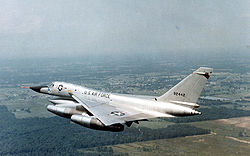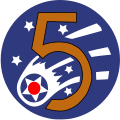65th Special Operations Squadron  | |
|---|---|
 MQ-9 Reaper as operated by the squadron | |
| Active | 1941–1946; 1946–1970; 1986–1991; 2018–present |
| Country | |
| Branch | |
| Role | Special Operations Attack and Reconnaissance |
| Part of | Air Force Special Operations Command |
| Nickname | Lucky Dicers |
| Motto | Scientiam Fortuna Iuvat (Latin for 'Fortune Favors the Knowing') [1] |
| Engagements | Antisubmarine Campaign Southwest Pacific Theater [2] |
| Decorations | Distinguished Unit Citation Air Force Outstanding Unit Award Philippine Presidential Unit Citation [2] |
| Insignia | |
| 65th Special Operations Squadron emblem (subdued) [1] |  |
| 65th Bombardment Squadron emblem [note 1] [3] |  |
| 65th Bombardment Squadron emblem [note 2] [3] |  |
The 65th Special Operations Squadron is an Air Force Special Operations Command unit which flies the General Atomics MQ-9 Reaper at Hurlburt Field, Florida. The squadron was first activated as the 65th Bombardment Squadron in January 1941, one of the original squadrons of the 43rd Bombardment Group. Following the attack on Pearl Harbor, the squadron participated in antisubmarine patrols until January 1942, when it moved to Australia and the Southwest Pacific Theater. It moved forward with US forces through New Guinea and the Philippines, moving to Ie Shima shortly before V-J Day for operations against Japan. It earned two Distinguished Unit Citations and a Philippine Presidential Unit Citation for combat operations. During this period, a crew from the 65th became the most decorated aircrew in United States history, when their B-17 fought off twenty Japanese fighters during a photo reconnaissance mission. The squadron was inactivated in the Philippines in April 1946.
Contents
- Mission
- History
- World War II
- Strategic Air Command
- Air Force Special Operations Command
- Lineage
- Assignments
- Stations
- Aircraft
- Awards and campaigns
- See also
- References
- Notes
- Bibliography
- External links
The squadron was activated again in October 1946 at Davis-Monthan Field, Arizona, when it assumed the resources of another unit. It operated propeller-driven Boeing B-29 Superfortresses and Boeing B-50 Superfortresses until 1954, when it upgraded to the jet Boeing B-47 Stratojet. In 1960, the squadron moved to Carswell Air Force Base, Texas, where it became one of the Air Force's first supersonic Convair B-58 Hustler units. In 1962, a crew from the 65th won the Mackay Trophy and the Bendix Trophy for setting a trio of transcontinental speed records in a round trip from Los Angeles to New York and back during Operation Heat Rise. It was inactivated in 1970 with the retirement of the B-58.
From 1986 to 1991, as the 65th Strategic Squadron, it controlled bombers and tankers deployed at Anderson Air Force Base, Guam. It was activated in its current role in December 2018.







